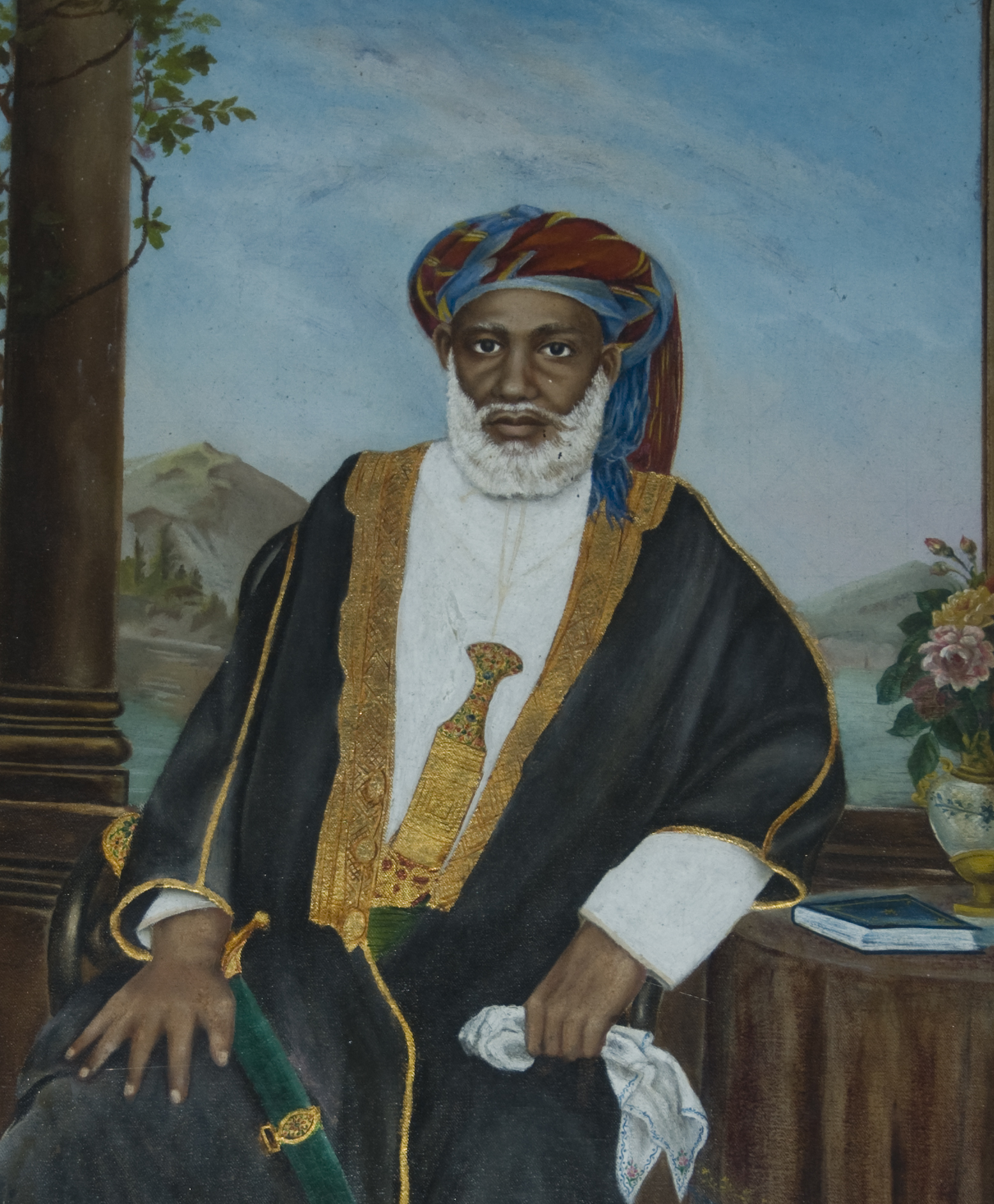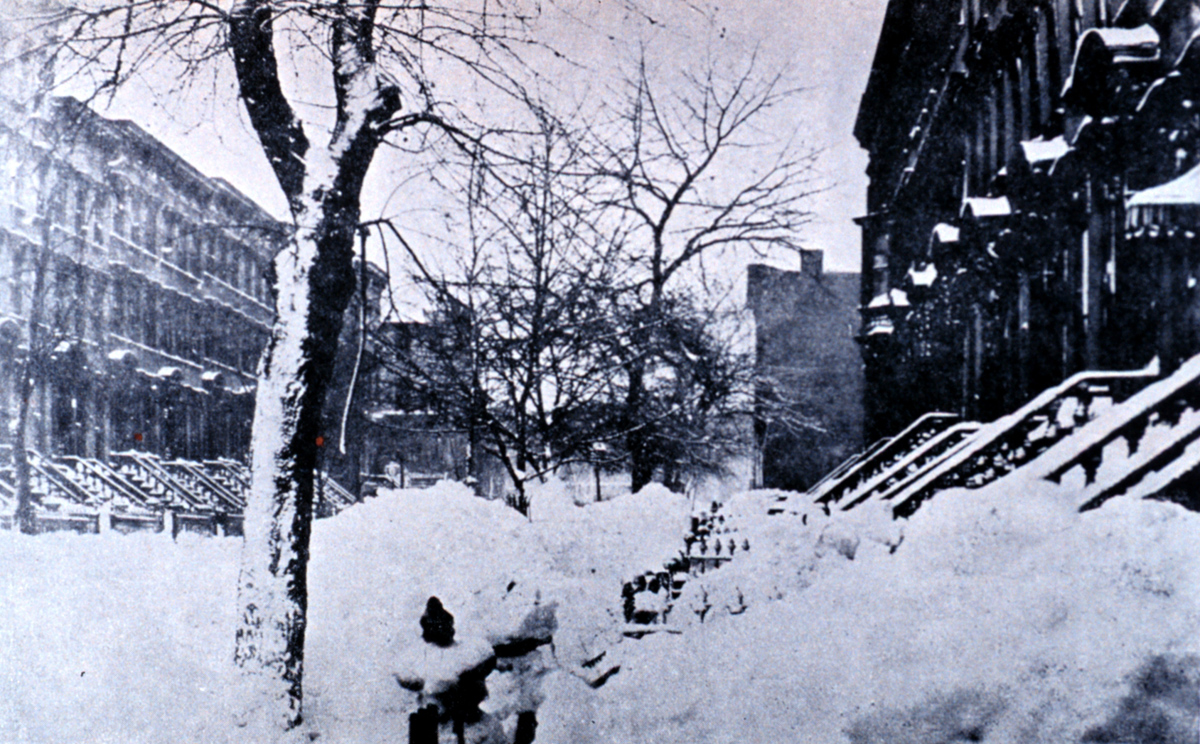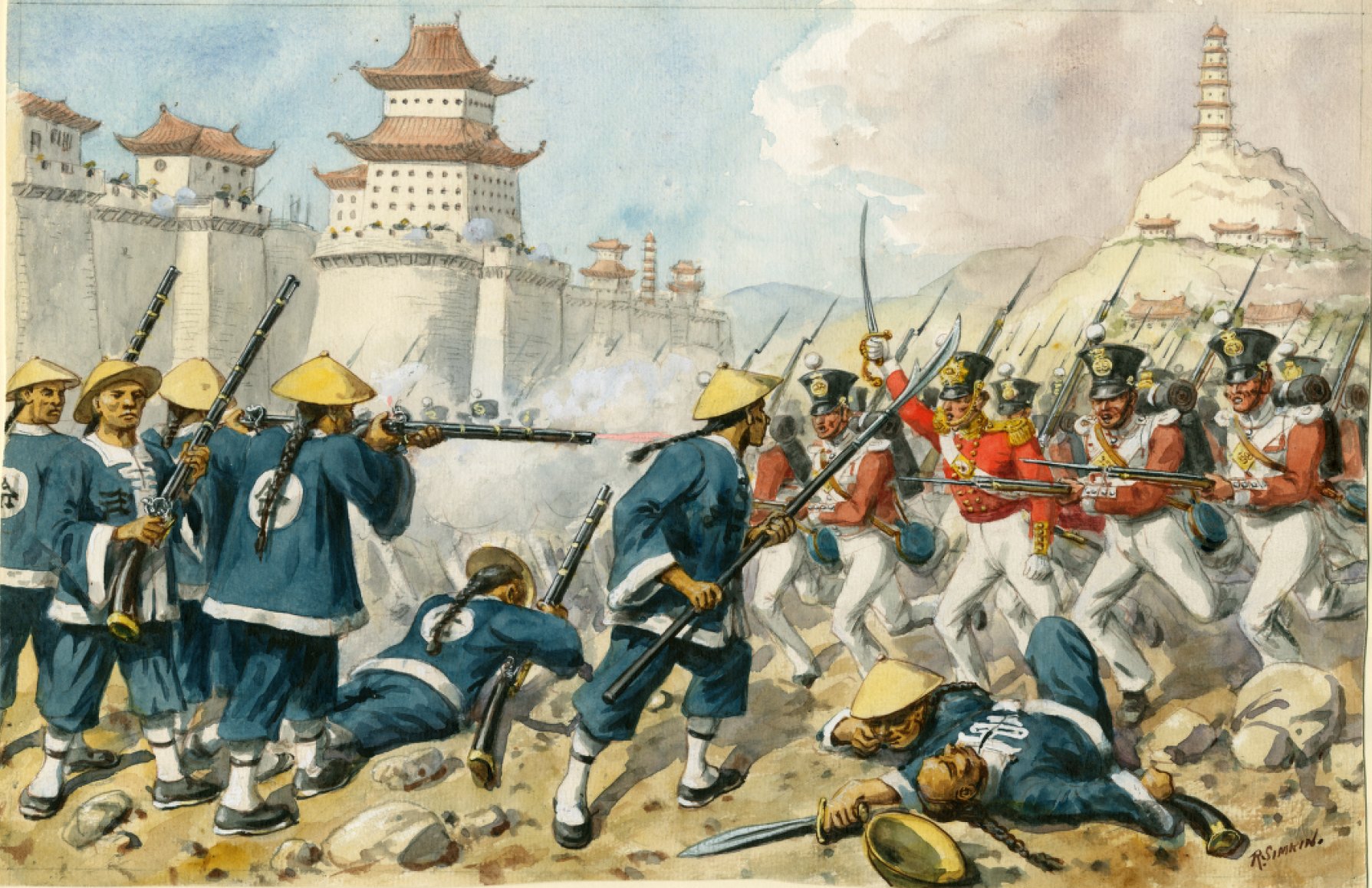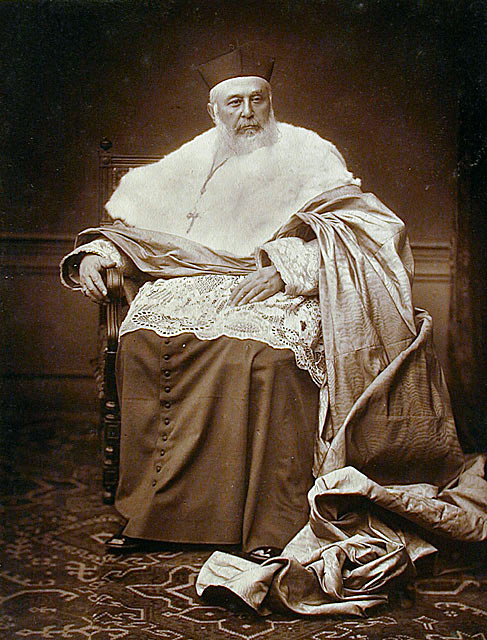|
Jean-Baptiste-Frézal Charbonnier
Jean-Baptiste-Frézal Charbonnier, M.Afr. (20 May 1842 – 16 March 1888) was a Catholic White Fathers missionary who was Vicar Apostolic of Tanganyika from January 1887 to March 1888. Jean-Baptiste-Frézal Charbonnier was born on 20 May 1842 in La Canourgue, France. He was ordained a priest of the White Fathers (Society of the Missionaries of Africa) on 22 May 1869. On 3 October 1884 the ''Missions Catholiques'' announced that it was proposed to consecrate Charbonnier, former principal of the missionary training college at Algiers, as Bishop and Vicar Apostolic of Tanganyika. Léon Livinhac had already been consecrated as Bishop and Vicar Apostolic of Nyanza on 16 September 1884. The two were to set out for their dioceses with a large staff. Charbonnier was stationed at Karema on the east shore of Lake Tanganyika when the French soldier Captain Léopold Louis Joubert arrived on 22 November 1886, on his way to provide assistance to the station of Mpala on the opposite shore ... [...More Info...] [...Related Items...] OR: [Wikipedia] [Google] [Baidu] |
Apostolic Vicariate Of Tanganyika
The Apostolic Vicariate of Tanganyika was a Catholic apostolic vicariate (missionary pre-diocesan jurisdiction) of the White Fathers missionary order at first centered on the mission of Karema in what is now Tanzania, that included parts of what are now Rwanda, Burundi, Democratic Republic of the Congo, Zambia and Malawi. As the number of missions, schools and converts grew, different regions became distinct vicariates covering portions of the original territory. History Early years The archbishop of Algeria, Charles Lavigerie, founded the society of Missionaries of Our Lady of Africa of Algeria in 1868. The society came to be known as the "Pères Blancs" or "White Fathers" from the white habits of the missionaries. At first the main activity was to care for Arab orphans in Algeria, but conversion of the people of Central Africa was an objective from the start. Ten missionaries left Algiers in 1878 to establish posts at Lakes Victoria Nyanza and Tanganyika. R.P. Ganachan of th ... [...More Info...] [...Related Items...] OR: [Wikipedia] [Google] [Baidu] |
Léopold Louis Joubert
Léopold Louis Joubert (or Ludovic Joubert) (22 February 1842 – 27 May 1927) was a French soldier and lay missionary. He fought for the Papal States between 1860 and 1870 during the Italian unification, which he opposed. He later assisted the White Fathers missionaries in East Africa and played an important role in the suppression of the slave trade between 1885 and 1892. He married a local woman and settled by the shore of Lake Tanganyika, where he lived until his death at the age of eighty five. Early years Léopold Louis Joubert was born at Saint-Herblon, France on 22 February 1842. As a child he wanted to be like the Christian warriors of the past. He was given the nickname "Ludovic" as a child, and was often called by this name as an adult. He attended school at Ancenis (1854–1858) and then Combrée (1858–1860). Joubert left school in 1860 to join the army that Pope Pius IX was raising to defend the Papal States as a member of the Franco-Belgian corps that was later ca ... [...More Info...] [...Related Items...] OR: [Wikipedia] [Google] [Baidu] |
White Fathers Priests
White is the lightest color and is achromatic (having no chroma). It is the color of objects such as snow, chalk, and milk, and is the opposite of black. White objects fully (or almost fully) reflect and scatter all the visible wavelengths of light. White on television and computer screens is created by a mixture of red, blue, and green light. The color white can be given with white pigments, especially titanium dioxide. In ancient Egypt and ancient Rome, priestesses wore white as a symbol of purity, and Romans wore white togas as symbols of citizenship. In the Middle Ages and Renaissance a white unicorn symbolized chastity, and a white lamb sacrifice and purity. It was the royal color of the kings of France as well as the flag of monarchist France from 1815 to 1830, and of the monarchist movement that opposed the Bolsheviks during the Russian Civil War (1917–1922). Greek temples and Roman temples were faced with white marble, and beginning in the 18th century, wit ... [...More Info...] [...Related Items...] OR: [Wikipedia] [Google] [Baidu] |
19th-century Roman Catholic Bishops In Tanzania
The 19th century began on 1 January 1801 (represented by the Roman numerals MDCCCI), and ended on 31 December 1900 (MCM). It was the 9th century of the 2nd millennium. It was characterized by vast social upheaval. Slavery was Abolitionism, abolished in much of Europe and the Americas. The First Industrial Revolution, though it began in the late 18th century, expanded beyond its British homeland for the first time during the 19th century, particularly remaking the economies and societies of the Low Countries, France, the Rhineland, Northern Italy, and the Northeastern United States. A few decades later, the Second Industrial Revolution led to ever more massive urbanization and much higher levels of productivity, profit, and prosperity, a pattern that continued into the 20th century. The Catholic Church, in response to the growing influence and power of modernism, secularism and materialism, formed the First Vatican Council in the late 19th century to deal with such problems an ... [...More Info...] [...Related Items...] OR: [Wikipedia] [Google] [Baidu] |
1888 Deaths
Events January * January 3 – The great telescope (with an objective lens of diameter) at Lick Observatory in California is first used. * January 12 – The Schoolhouse Blizzard hits Dakota Territory and the states of Montana, Minnesota, Nebraska, Kansas and Texas, leaving 235 dead, many of them children on their way home from school. * January 13 – The National Geographic Society is founded in Washington, D.C. * January 19 – The Battle of the Grapevine Creek, the last major conflict of the Hatfield–McCoy feud in the Southeastern United States. * January 21 – The Amateur Athletic Union is founded by William Buckingham Curtis in the United States. * January 26 – The Lawn Tennis Association is founded in England. February * February 27 – In West Orange, New Jersey, Thomas Edison meets with Eadweard Muybridge, who proposes a scheme for sound film. March * March 8 – The Agriculture College of Utah (later Utah State University) i ... [...More Info...] [...Related Items...] OR: [Wikipedia] [Google] [Baidu] |
1842 Births
Events January–March * January 6–January 13, 13 – First Anglo-Afghan War – Massacre of Elphinstone's army (Battle of Gandamak): British East India Company troops are destroyed by Afghan forces on the road from Kabul to Jalalabad, Afghanistan, by Wazir Akbar Khan, Akbar Khan, son of Dost Mohammad Khan (Emir of Afghanistan), Dost Mohammad Khan. * January 8 – Delft University of Technology is established by William II of the Netherlands, as a 'Royal Academy for the education of civilian engineers'. * January 23 – Antarctic explorer James Clark Ross, charting the eastern side of James Ross Island, reaches a Farthest South of 78°09'30"S. * January ** Michael Alexander (bishop), Michael Alexander takes office, as the first appointee to the Anglican-German Bishopric in Jerusalem. ** United States, American medical student William E. Clarke of Berkshire Medical College becomes the first person to administer an inhaled anesthetic, to facilitate a surgical procedure. ... [...More Info...] [...Related Items...] OR: [Wikipedia] [Google] [Baidu] |
Kipalapala
Kipalapala is a community in Tanzania close to Tabora. It became the location of a White Fathers mission around 1891, and now contains various Catholic institutions including a senior seminary and a priory. Mission The mission of St. Paul Major Seminary, Kipalapala is to impart academic, religious, moral and human training to young persons who will serve the Catholic Church and the nation as committed priests. R.P. Ganachan of the White Fathers penetrated the region of Unyanyembe in 1879, and tried unsuccessfully to settle at Tabora. In 1891 R.P. Guillet managed to open an orphanage at Tabora, which was soon moved to Kipalapala an hour's walk away. Jean-Baptiste-Frézal Charbonnier was ordained bishop by Bishop Léon Livinhac on 24 August 1887 at Kipalapala. He was the first bishop to be ordained in equatorial Africa. Vision The vision of St. Paul's Major Seminary is a deep evangelization of the local Catholic Church of Tanzania through a well trained personnel. This evangeliza ... [...More Info...] [...Related Items...] OR: [Wikipedia] [Google] [Baidu] |
Mpala
Mpala is the location of an early Catholic mission in the Belgian Congo. A military station was established at Mpala on the shores of Lake Tanganyika in May 1883. It was transferred to the White Fathers missionaries in 1885. At one time it was hoped that it would form the nucleus of a Christian kingdom in the heart of Africa. However, after a military expedition had to be sent to protect the mission from destruction by local warlords in 1892, civil control returned to the Belgian colonial authorities. The first seminary in the Congo was established at Mpala, and later the mission played an important role in providing practical education to the people of the region. Location Mpala lies on the west shore of Lake Tanganyika in Tanganyika Province, to the north of Moba and south of Kalemie. The station was established at the mouth of the Lufuku River. The lake is about long and across. An 1898 book described it as an inland sea, navigated by a regular flotilla. At that time Albert ... [...More Info...] [...Related Items...] OR: [Wikipedia] [Google] [Baidu] |
Lake Tanganyika
Lake Tanganyika ( ; ) is an African Great Lakes, African Great Lake. It is the world's List of lakes by volume, second-largest freshwater lake by volume and the List of lakes by depth, second deepest, in both cases after Lake Baikal in Siberia. It is the world's longest freshwater lake. The lake is shared among four countries—Tanzania, the Democratic Republic of the Congo (the DRC), Burundi, and Zambia—with Tanzania (46%) and the DRC (40%) possessing the majority of the lake. It drains via the Lukuga River into the Congo River system, which ultimately discharges at Banana, Democratic Republic of the Congo into the Atlantic Ocean. Geography Lake Tanganyika is situated within the Albertine Rift, the western branch of the East African Rift, and is confined by the mountainous walls of the valley. It is the largest rift lake in Africa and the second-largest freshwater lake by volume in the world. It is the deepest lake in Africa and holds the greatest volume of fresh water on the ... [...More Info...] [...Related Items...] OR: [Wikipedia] [Google] [Baidu] |
Léonce Bridoux
Léonce Bridoux, M. Afr. (15 January 1852 – 20 October 1890) was a Catholic missionary of the White Fathers who became the Vicar Apostolic of Tanganyika. Early years Léonce Bridoux was born on 15 January 1852 in Henin-Liétard, France. His father was Sub Saharan African and his mother was French. He joined the White Fathers (Society of the Missionaries of Africa) in 1873.On 24 October 1874 he was ordained a priest of the White Fathers. Bridoux became Superior of the Major seminary of Carthage in Tunisia. Brothers in arms Charles Lavigerie, the founder of the White Fathers in 1868 and the White Sisters in 1869, had great influence on missionary activity in Africa. He came to believe that an African Catholic kingdom should be founded in the east of Central Africa as a refuge for escaped slaves and a center for converting the surrounding peoples. In May 1883 a mission head proposed the idea of brothers who would train the converts to defend their missions, as an alternative ... [...More Info...] [...Related Items...] OR: [Wikipedia] [Google] [Baidu] |
Apostolic Vicariate Of Victoria-Nyanza
The Apostolic Vicariate of Victoria Nyanza was a Catholic mission of the White Fathers (Society of the Missionaries of Africa) in the region around Lake Victoria from 1883 to 1894. History The mission of Victoria Nyanza was founded in 1878 by the White Fathers of Charles Lavigerie. It was erected into an apostolic vicariate on 31 May 1883, with Mgr. Léon Livinhac as the first vicar Apostolic. When Livinhac became Superior General of the Society of White Fathers in October 1889, John Joseph Hirth was appointed his successor. A civil war broke out in Buganda in 1892, during which the Catholic camp was totally defeated. The war pitted supporters of the French Catholic missions against supporters of the British missions in Buganda, backed by a small force of Sudanese soldiers under Captain Frederick Lugard of the Indian Army. Lugard's maxim gun proved decisive. Hirth and the White Fathers moved to the Bukoba kingdoms of Kiziba and Bugabo in 1892 with about fifty Baganda Christian conv ... [...More Info...] [...Related Items...] OR: [Wikipedia] [Google] [Baidu] |
Léon Livinhac
Léon-Antoine-Augustin-Siméon Livinhac, M.Afr. (13 July 1846 - 12 November 1922) was a Catholic priest who established the church in what is modern Uganda and became head of the White Fathers (Society of the Missionaries of Africa). He oversaw a major expansion of the missionary society that coincided with the European colonial annexation of most of Africa. Birth and education Léon Livinhac was born on 13 July 1846 in the parish of Buzeins in the Aveyron department of the south of France, one of three children of a farmer. His father, Antoine Simon Livinhac, died when he was two years old. His mother, Marie Aimée, died when he was five. He was raised by his grandmother and his aunts. He suffered from poor health as a child, but was an excellent and industrious scholar. He attended primary school at Saint-Geniez-d'Olt from 1855 to 1860, then entered Saint Denis, the diocesan college at Saint Geniez. He entered the Sulpician major seminary of Rodez in October 1867, received the ... [...More Info...] [...Related Items...] OR: [Wikipedia] [Google] [Baidu] |






